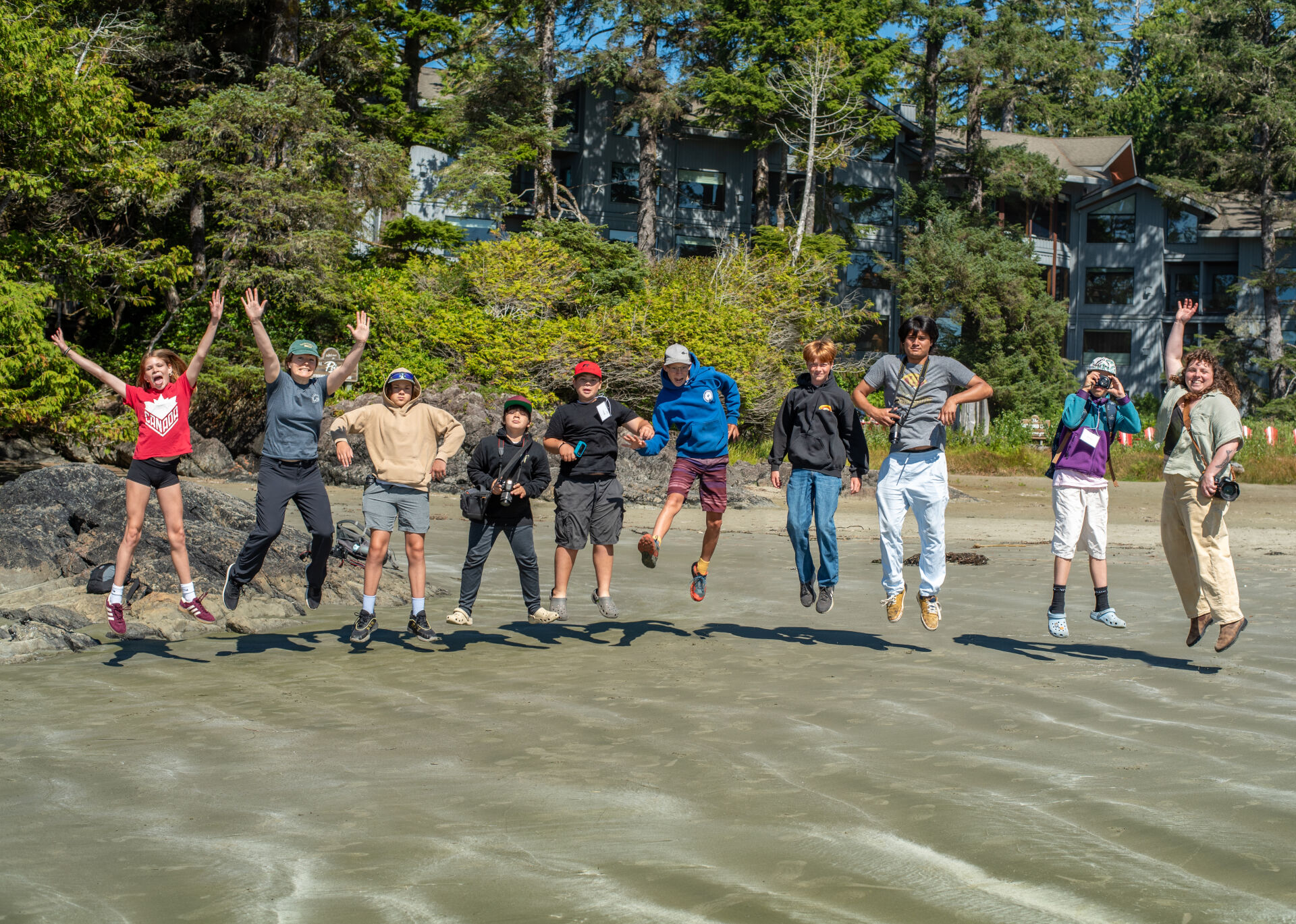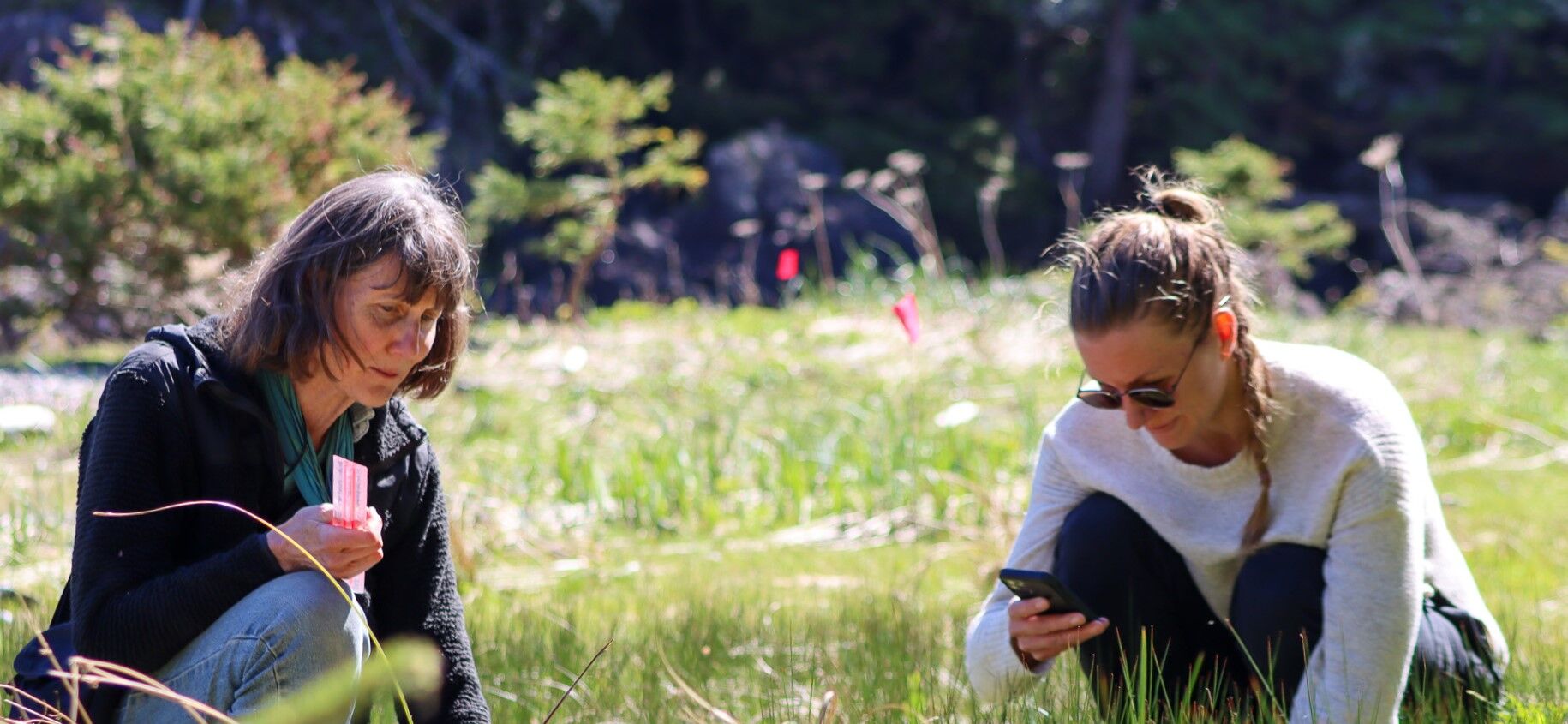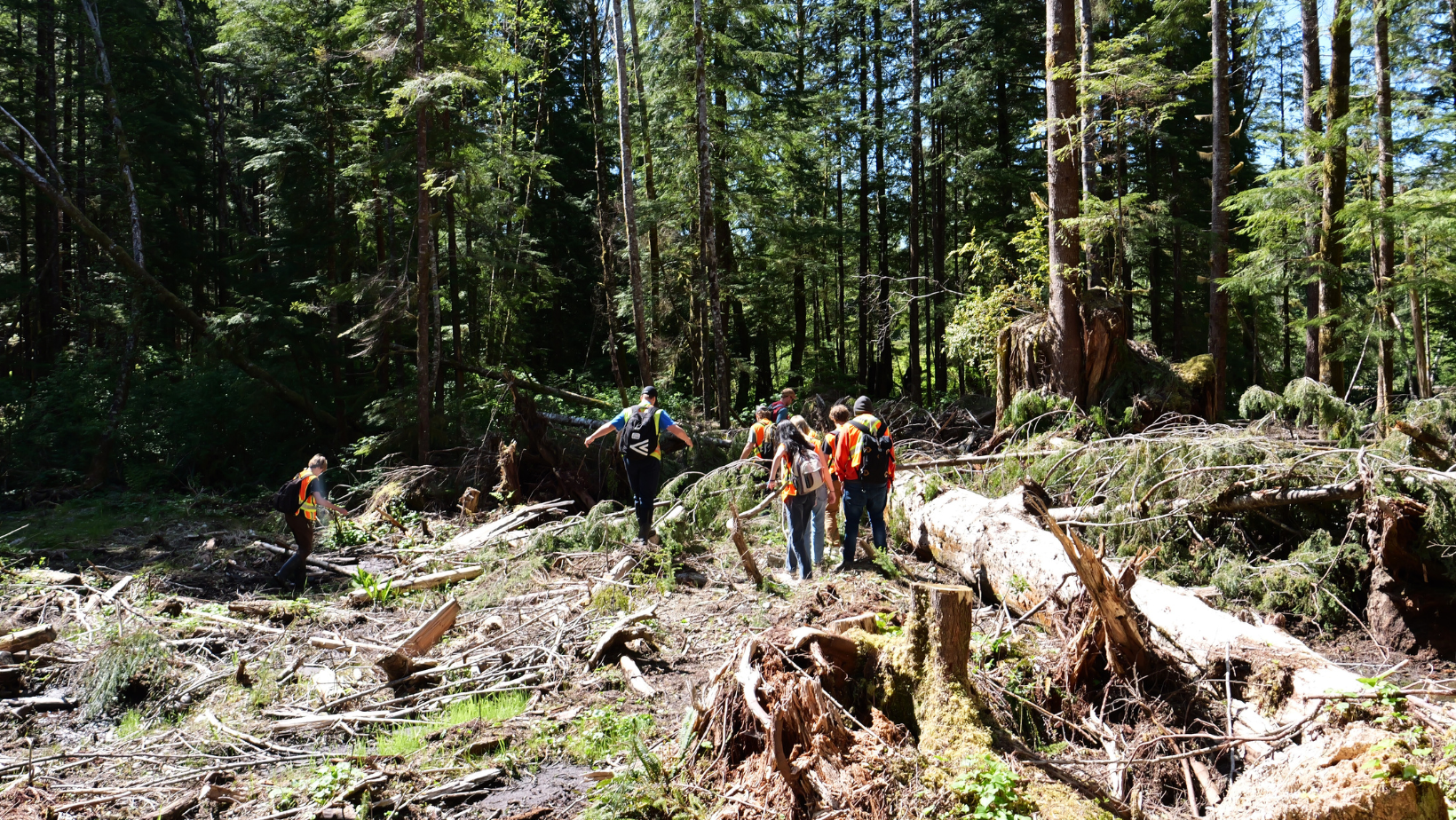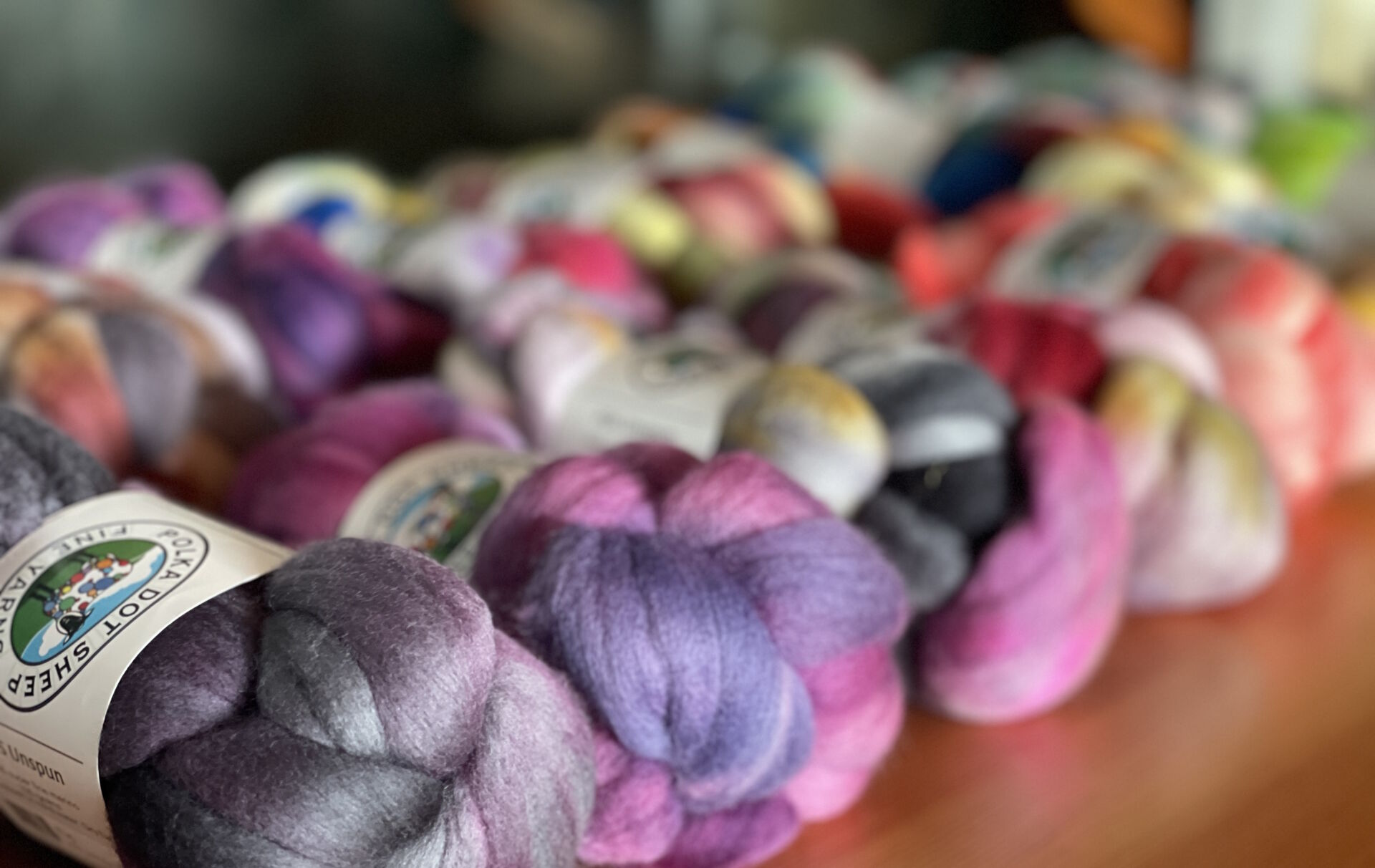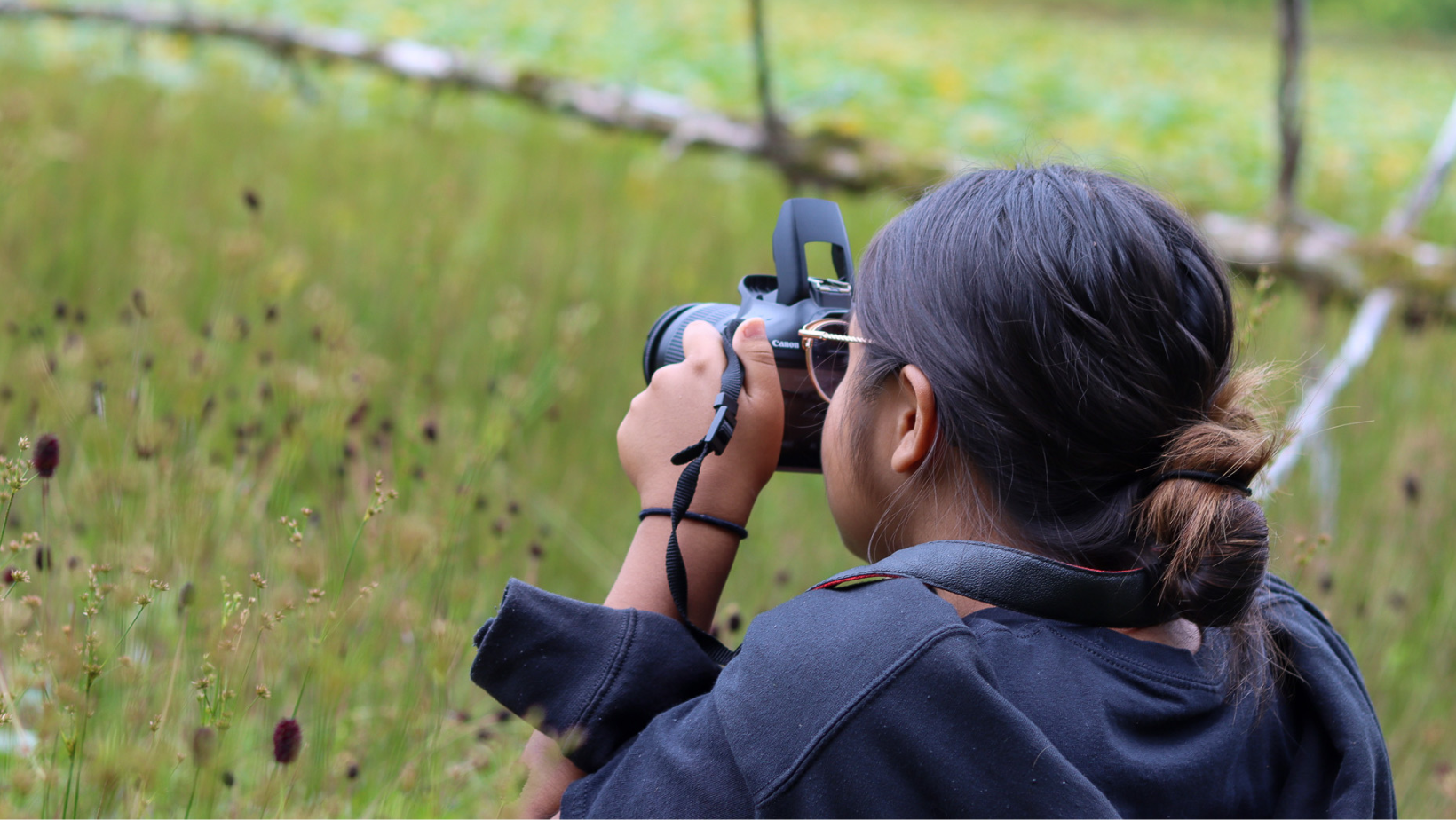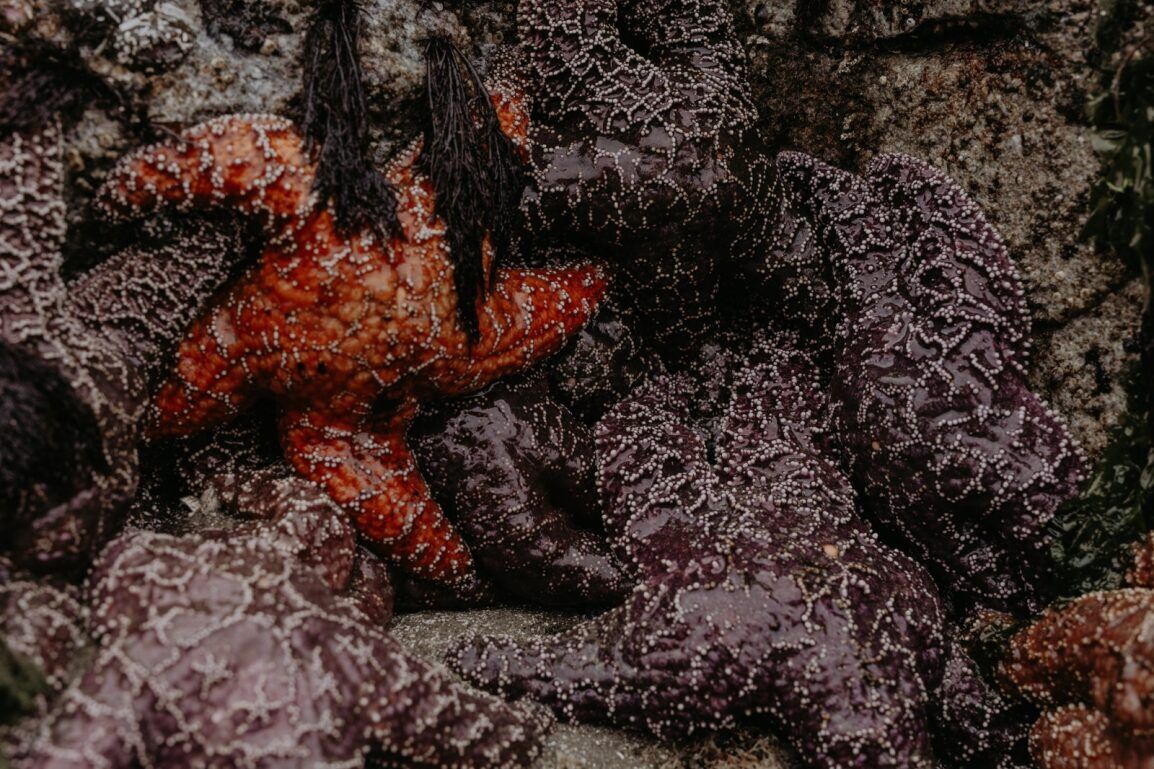Looking Back: 2025 Tamagawa Students Learning in the Clayoquot Biosphere Region
This summer, West Coast NEST was delighted to welcome 15 agriculture students from Tamagawa University’s Nanaimo satellite campus for three days of place-based learning across the Clayoquot Sound UNESCO Biosphere Region. With the support of our partners, including Raincoast Education Society, Tribal Parks Allies, the Association of Wetland Stewards for Clayoquot and Barkley Sounds, and WildSafeBC we were able to provide action-packed lessons that combined science, culture and hands-on stewardship in the region.
 Photo Credit: Nina Moodley
Photo Credit: Nina Moodley
Our students were tasked with collecting information on their trip for a presentation on one of 5 topics they learned about while visiting the West Coast. Topics included: Nuu-chah-nulth culture, forest restoration, coastal ecosystems, local salmon, and wolves. With such an engaged and passionate group of students, our guides loved sharing their knowledge with so many curious minds!
 Photo Credit: Nina Moodley
Photo Credit: Nina Moodley
Kicking off our three-day adventure, students were welcomed to the West Coast NEST office, where our Director of Education, Nicole, introduced the UNESCO Biosphere Region, its history, location, safe wildlife practices, and CoastSmart principles before the group set out into the field.
 Photo Credit: Nina Moodley
Photo Credit: Nina Moodley
We then made our way to the Tofino Community Hall, where we met up with Derek from Raincoast Education Society.
 Photo Credit: Nina Moodley
Photo Credit: Nina Moodley
Students took a slow interpretive walk with Derek down the Tonquin Trail and beach, stopping to talk about some key species in the ecosystem.
 Photo Credit: Nina Moodley
Photo Credit: Nina Moodley
Included in his lesson, Derek explained the identifying features and distinctions of important local tree species such as Western Red Cedar, Western Hemlock, and Sitka Spruce. Students were then able to recognize these species throughout their time in the region.
 Photo Credit: Nina Moodley
Photo Credit: Nina Moodley
Whether it’s the canopy up above or the busy forest floor, there is always so much to learn about wherever you look!
 Photo Credit: Nina Moodley
Photo Credit: Nina Moodley
Back at the Tofino Community Hall, students were joined by Tribal Parks Allies guardian Cory Tattuuskulth Charlie, for a presentation about Indigenous history and stewardship in the Clayoquot Sound Region. Cory explained how the land has long been stewarded and protected by Nuu-chah-nulth Nations and touched on some of the long-lasting impacts of colonization, both past and present
 Photo Credit: Nina Moodley
Photo Credit: Nina Moodley
Cory discussed the origins of the Tla-o-qui-aht Tribal Parks, including the Meares Island protest, salmon restoration efforts, marine debris cleanup, and the community’s 500-year stewardship vision focused on healing the environment and supporting resilient local economies. The Tla-o-qui-aht Tribal Parks are located in Clayoquot Sound, the first one being established in the 1980s to prevent clear-cut logging of ancient coastal temperate rainforests. These protected areas stand as living proof of the Tla-o-qui-aht First Nations' enduring dedication to safeguarding their ancestral lands and waters, preserving both cultural traditions and ecological integrity for generations to come. Students were full of questions for Cory and interested in the restoration efforts of the Tribal Parks Guardians.
 Photo Credit: Nina Moodley
Photo Credit: Nina Moodley
Day two began at the Rainforest Trail in Ucluelet with Barb Beasley from the Association of Wetland Stewards for Clayoquot and Barkley Sounds. In classic west-coast weather, the group explored differences between old-growth and new-generation forests, learning why structural variety, standing dead trees, and fallen logs are essential for biodiversity.
 Photo Credit: Nina Moodley
Photo Credit: Nina Moodley
Barb explained how gaps in the canopy allow sunlight to reach the understory, encouraging a rich mix of plants like ferns and shrubs to thrive below. Old-growth forests have plenty of standing dead trees and fallen logs, which serve as vital sources of food, shelter, moisture, and nutrients for wildlife and epiphytes like fungi, lichen, and moss.
 Photo Credit: Nina Moodley
Photo Credit: Nina Moodley
Shallow root systems above bedrock make old-growth trees vulnerable to wind gusts, resulting in fallen trees that become “nurse logs” which feed future generations of trees.
 Photo Credit: Nina Moodley
Photo Credit: Nina Moodley
In contrast, new generation forests often have dense, unbroken canopies that limit light penetration, leading to a sparse and less diverse layer of vegetation underneath.
 Photo Credit: Nina Moodley
Photo Credit: Nina Moodley
Along the way, our students met some slimy slug friends and tested their knowledge by identifying key species they had learned about on the Tonquin Trail.
After making their way through the rainforest, the sunshine made an appearance just in time for Barb to lead the group to Kimoto Park where the Association of Wetlands Stewards for Clayoquot and Barkley Sounds are actively restoring the natural habitat by removing invasive species such as Yellow Flag Iris.
 Photo Credit: Nina Moodley
Photo Credit: Nina Moodley
Yellow Flag Iris has multiplied drastically in this area and while they may be pretty in bloom, they are not a native plant to this area. With nothing to manage their population growth they leave little room for other native species to thrive.
 Photo Credit: Nina Moodley
Photo Credit: Nina Moodley
Students learned how to properly remove the plant by the roots, bag plants for disposal, and then cover the ground to smother remaining rhizomes, ensuring they won’t return. Together, they completed another patch in the park and contributed to the area’s restoration efforts.
 Photo Credit: Nina Moodley
Photo Credit: Nina Moodley
On their last day in Clayoquot Sound, students sat down with Community Coordinator Chris Read from WildSafeBC, the provincial leader in preventing conflict with wildlife through collaboration, education and community solutions. Chris explained how to stay safe as a resident and visitor in wildlife country and introduced key local wildlife species such as bears, wolves, cougars and salmon!

Photo Credit: Nicole Gerbrandt
Living alongside wildlife means taking steps to coexist safely and respectfully. That includes keeping attractants like garbage and fallen fruit secured, designing wildlife-smart yards, and staying alert in outdoor spaces. WildSafeBC recommends traveling in groups, leashing pets, avoiding dawn and dusk in predator-prone areas, and carrying bear spray, especially during high-speed activities like biking or trail running.
 Photo Credit: Nina Moodley
Photo Credit: Nina Moodley
Students also explored the life cycle and cultural importance of the five species of Pacific salmon,Chinook, Coho, Pink, Sockeye, and Chum and discovered how they differ from Japan’s Masu salmon. In the Clayoquot Sound Biosphere Region, salmon are vital to ecosystems and Indigenous cultures, yet face growing threats from climate change and habitat loss. They also learned about Vancouver Island coastal wolves, a marine-adapted subspecies of the Gray Wolf, whose diet and history diverge greatly from the now-extinct Japanese wolf. Students were able to ask all their burning questions to collect information for their project on local wildlife. The session balanced science, local history, and simple actions everyone can take to protect both people and wildlife.
 Photo Credit: Nina Moodley
Photo Credit: Nina Moodley
West Coast NEST is thrilled to have hosted another enriching educational exchange in the Clayoquot Sound Biosphere Region and we’re grateful to all our partners who helped make it possible. Students left with place-based knowledge of the region, a deepened understanding of local cultures and ecosystems and practical stewardship skills to carry forward. We look forward to more opportunities to bring learners into the field and to support meaningful connections between people and place!


